
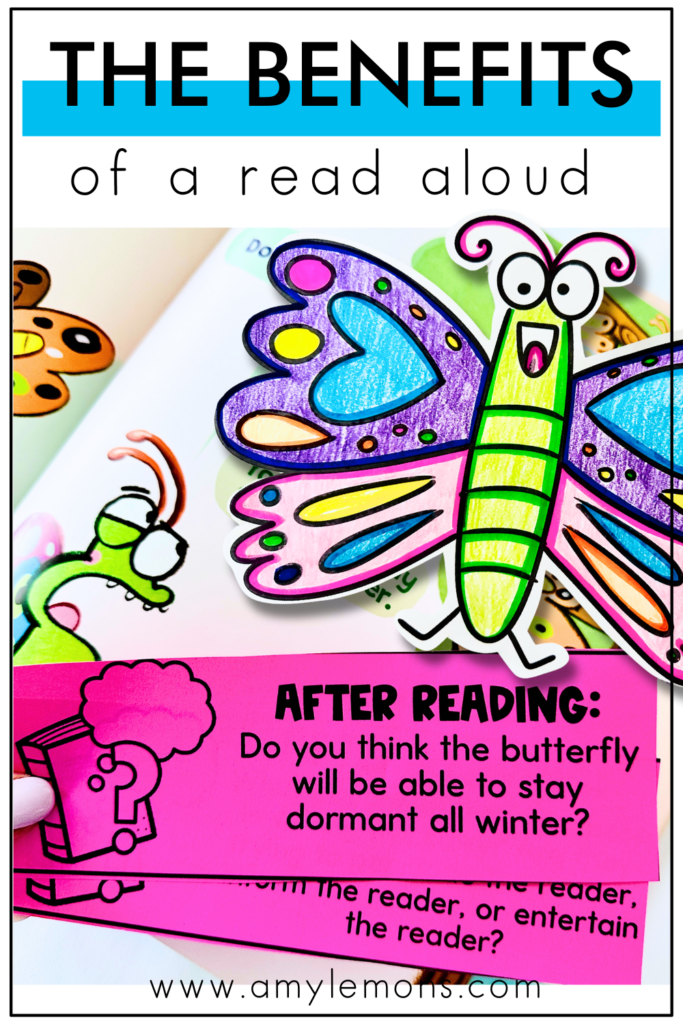
{Disclosure: Affiliate links have been used in this post but I only share items I use and enjoy!}
While many grapple with incorporating adequate and necessary independent reading time, many underestimate the amazing benefits of using read-alouds. Not everyone is sold on just how valuable reading aloud to kids can be and that makes it my job to sing its praises from the rooftop.
Read-alouds are valuable tools for reading comprehension in the classroom. They provide the basis for essential lessons, help encourage reading, and enhance vocabulary. It’s a winner for sure.
But after reading the book, Read Alouds for All Learners by Molly Ness, I realized that a more thorough explanation of why read-alouds are so important would be necessary so more educators could use them to help their students deepen comprehension.
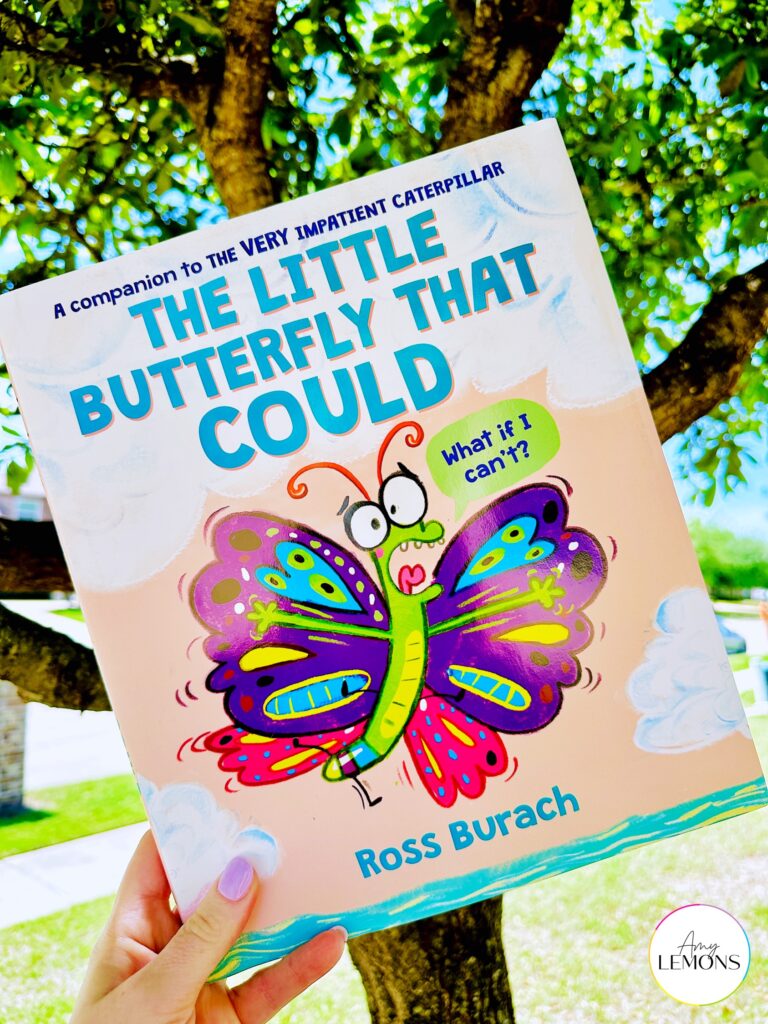
Before we break down the benefits of a read-aloud, let’s look at how a read-aloud is defined. The International Literacy Association’s glossary defines read-aloud as the practice of a teacher or designated reader orally reading a text with large or small groups.
Pictures or text may be shared visually with the students whose primary role is to listen and view the illustrations. The intent is to model proficient reading and language, promote conversation, motivate, and extend comprehension and conceptual understanding.
Let’s break down the roles in a read-aloud:
Teacher’s Role:
Student’s Role:
There is a lot going on behind the scenes of a read-aloud that teachers automatically do without even realizing they are doing it! We are going to use the VERY entertaining picture book, The Little Butterfly That Could, to consider the benefits of a highly effective read-aloud in the classroom.
Before reading the selected text to the class, consider how you can build upon students’ background knowledge.
In The Little Butterfly That Could, the butterfly faces obstacles as he tries to find the other migrating butterflies. He overcomes a challenge through determination and with a little encouragement from a new friend. We can incorporate overcoming challenges into a pre-reading journal activity by having students consider what challenges they have faced in life.
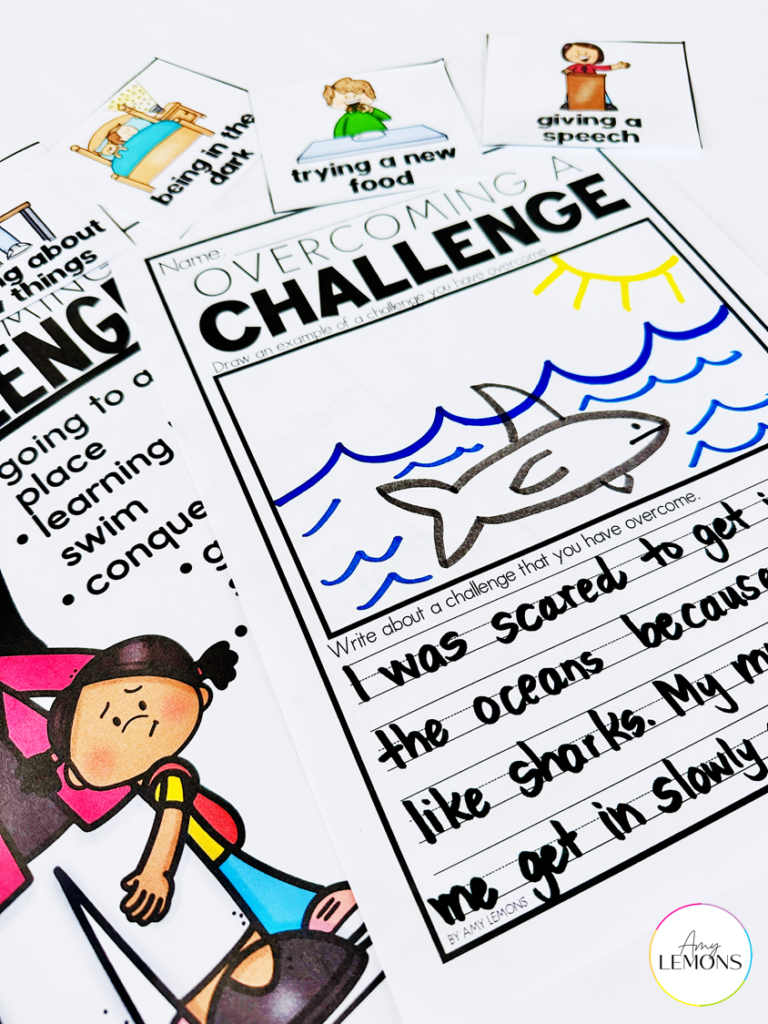
Provide a list of common challenges that children overcome such as: going to a new place, learning how to swim, conquering a fear, trying a new food, giving a speech, etc. Students can draw and write about a challenge that they have faced and how they overcame the challenge.
This will help to build a connection to the butterfly throughout the story. It will also activate the background knowledge needed to understand how the butterfly responded to a major event.
One way that we can model thinking aloud as well as consistently spiral comprehension skills is through asking and answering questions about the text. I like to do this through preselected book questions.
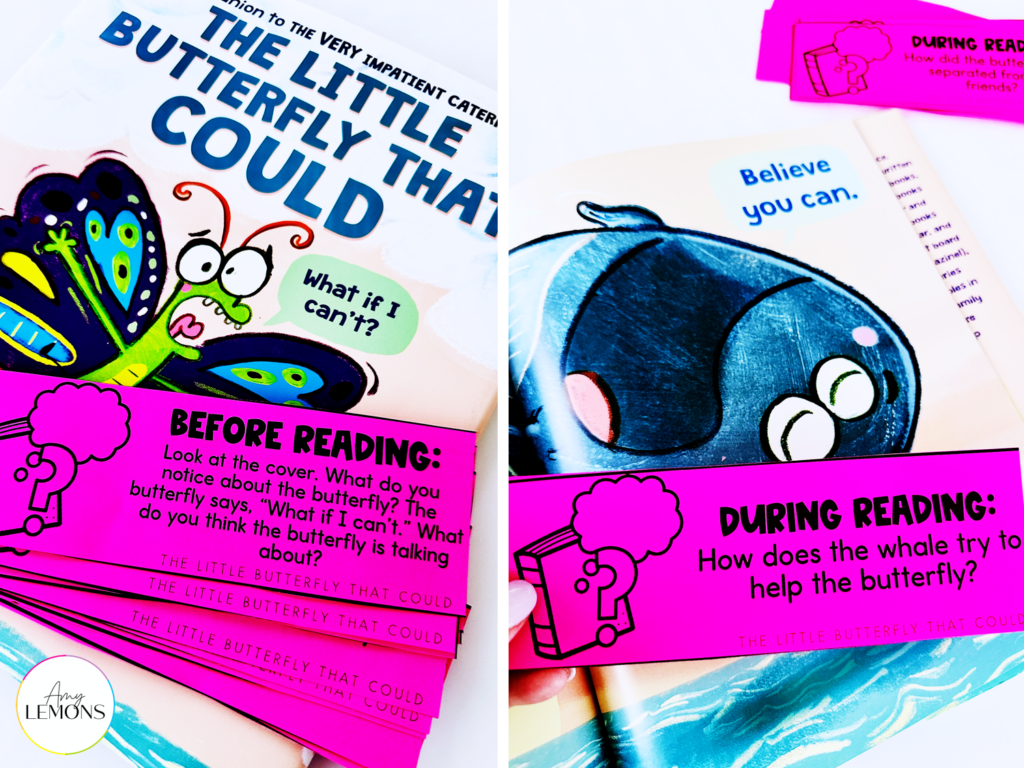
Before reading aloud a text, I sit down with the picture book and ask myself:
Having preselected book questions allows the teacher to make the most of the read-aloud. They are also great conversation starters that will deepen students’ understanding of the text.
Did you know that read-alouds are the perfect opportunity for vocabulary instruction because they offer a wealth of uncommon (vocabulary) words?

Research shows that there are more rare (vocabulary) words in children’s literature than in television shows, everyday conversation, and textbook instruction. This means we can get the most bang for our buck when targeting vocabulary instruction with a read-aloud. Here are some simple ways you can target vocabulary with a picture book:
We’ve seen how both the teacher and the students have a role in the read-aloud process. One of those roles is to engage in conversation and deepen comprehension. An anchor chart can do both of those things during a read-aloud!
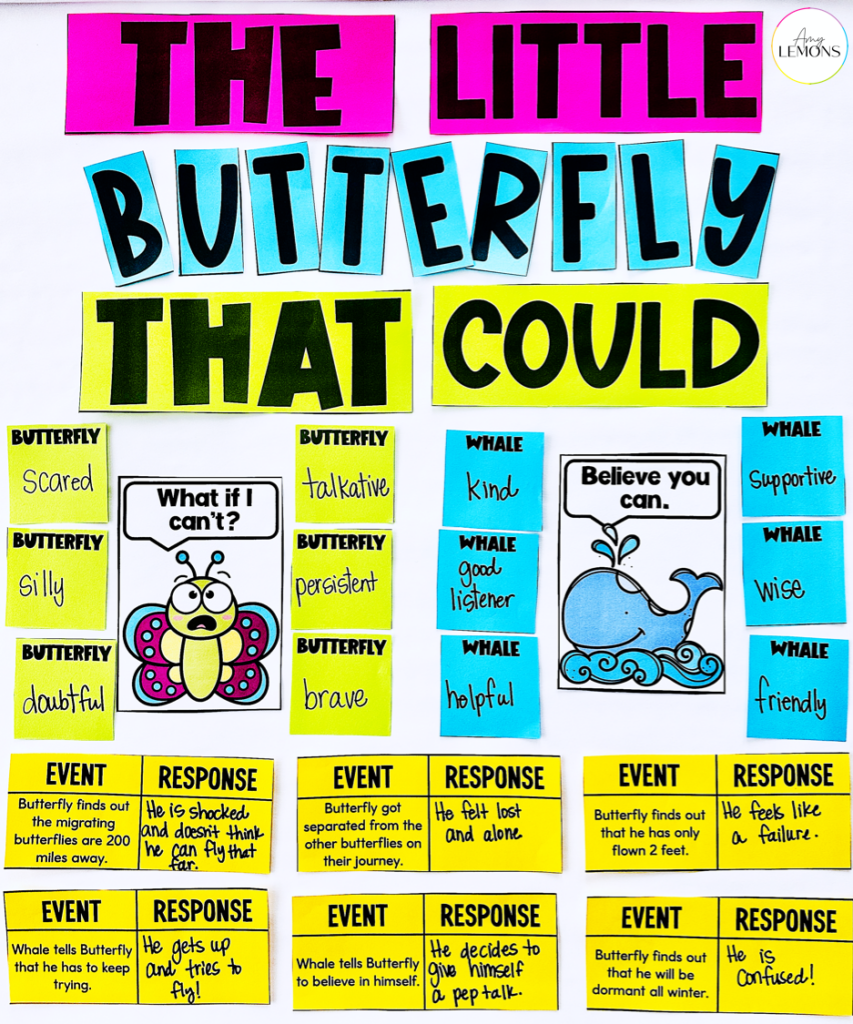
Have you ever stopped to consider why these charts are called anchor charts? It’s because, like an anchor, they hold the learning, ideas, and instruction in place. They serve as a landing spot for the comprehension conversation.
With this anchor chart, students brainstorm character traits for the two main characters in the story. You can take this a step further by having students explain WHERE that character trait is shown throughout the text. This engages students in a conversation while also targeting the skill of understanding and describing a character.
Take this even further by discussing how characters respond to major events. Given a set of story events, students look back through the text to see how the butterfly responded to those challenges.
Now that we’ve done the legwork for comprehension, it’s time for students to extend their learning. You’ve discussed the book. You’ve introduced and explained unfamiliar words. You’ve taught them about character traits and overcoming challenges. Now it’s time for the students to demonstrate that understanding.

This can be done through the use of a character analysis graphic organizer or a response sheet for how characters respond to major events. Not only will it hold the students accountable for their learning, but it will also give you a way to check for understanding.
Questions to ask to check for understanding may be: Did they understand the story? Did they understand the comprehension skill? Can they apply the comprehension strategy on their own?
I don’t know about you, but even as a middle-aged adult, I can still remember when my teachers read aloud to me. I have fond memories of my 4th grade teacher reading James and the Giant Peach. I remember crying through Old Yeller with my 5th-grade teacher. I can even remember sitting at my first-grade teacher’s feet as she read us countless stories. The read-aloud is a powerful thing!
I often like to wrap up a read-aloud with a fun project that will leave an imprint on students. One of the ways I do this is through a directed drawing of the main character.

The butterfly in this book is a character that the students will absolutely love. He will make them laugh. He will make them think. He has a lot of personality! Students can show all of those characteristics through their drawings.
Then, students demonstrate their understanding of the text by writing about how the butterfly was able to overcome challenges in the story. Now, you’ve got a beautiful art and writing project that demonstrates students’ understanding of the text.
Ensuring this joyful experience means being intentional with your read-alouds. For more tips on intentional reading, check out tips and strategies for using intentional read-alouds.
The Little Butterfly That Could is just one example of the power of a read-aloud, but once you’ve introduced butterflies with this story, your students are destined to want more and more! Here are some of my favorite butterfly books for the classroom.
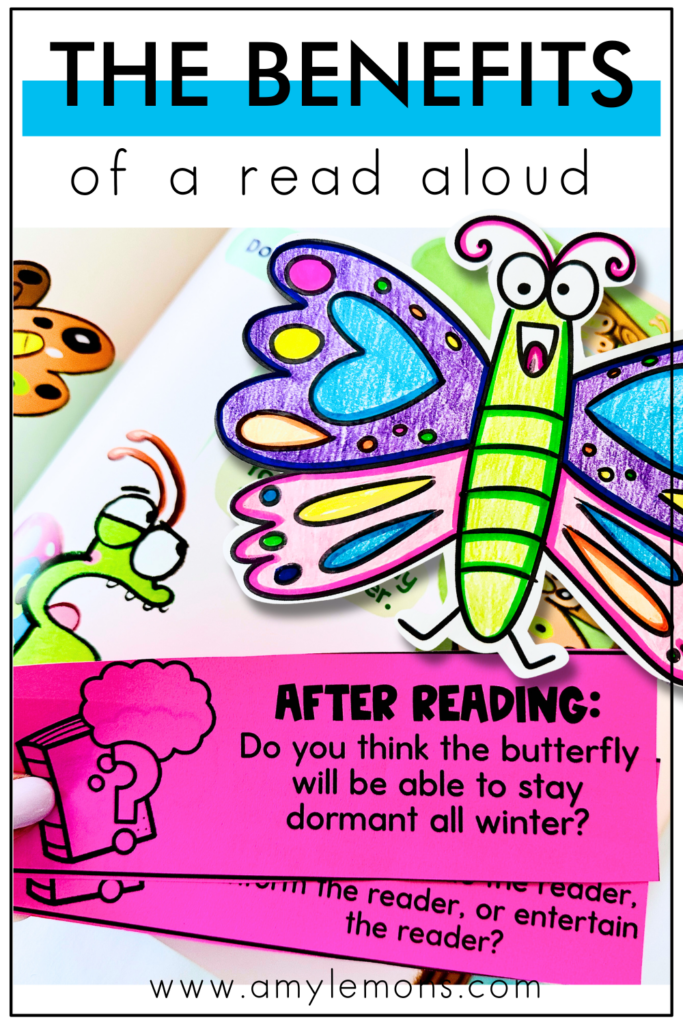

Hey, y’all! My name is Amy Lemons and I am passionate about providing students with both engaging and effective standards-based Math and ELA lessons.
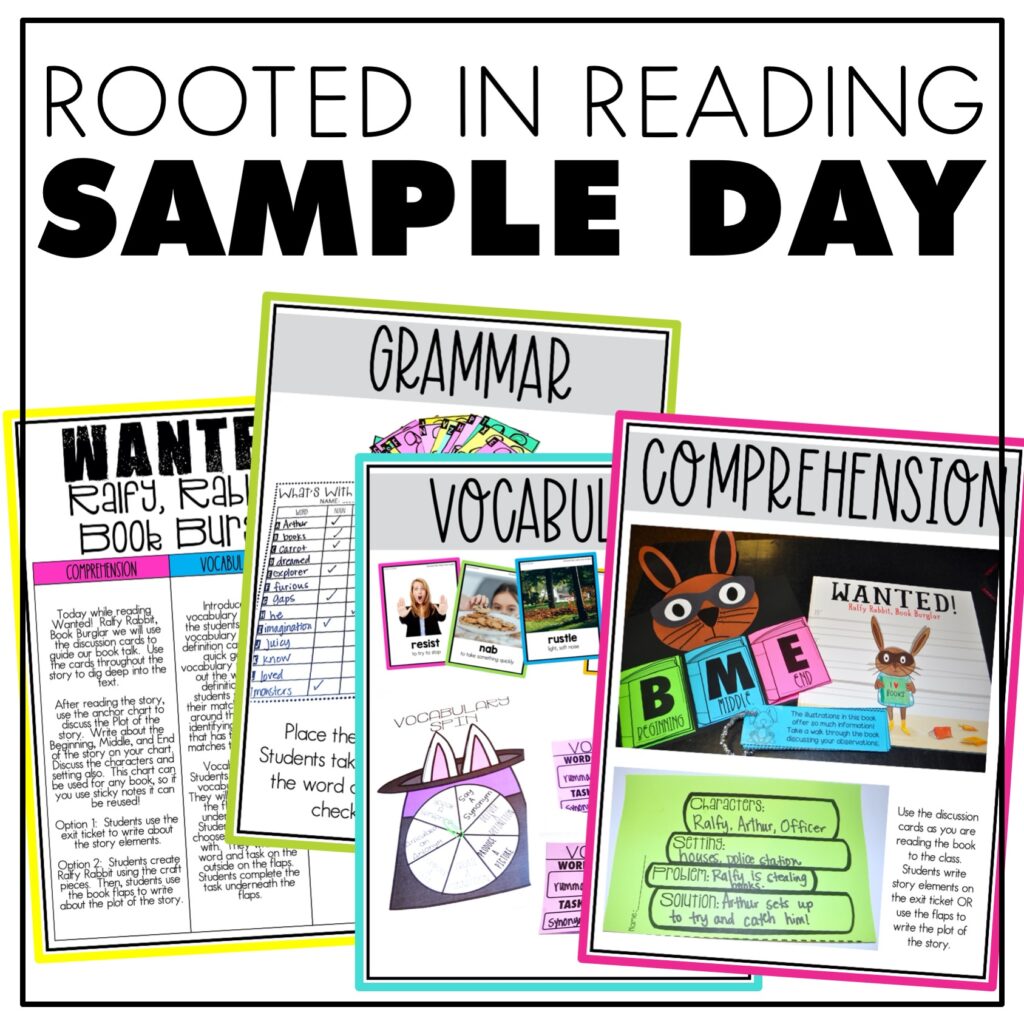
Sample a day of Rooted in Reading with these lesson plans and activities for Reading Comprehension, Vocabulary, and Grammar!


